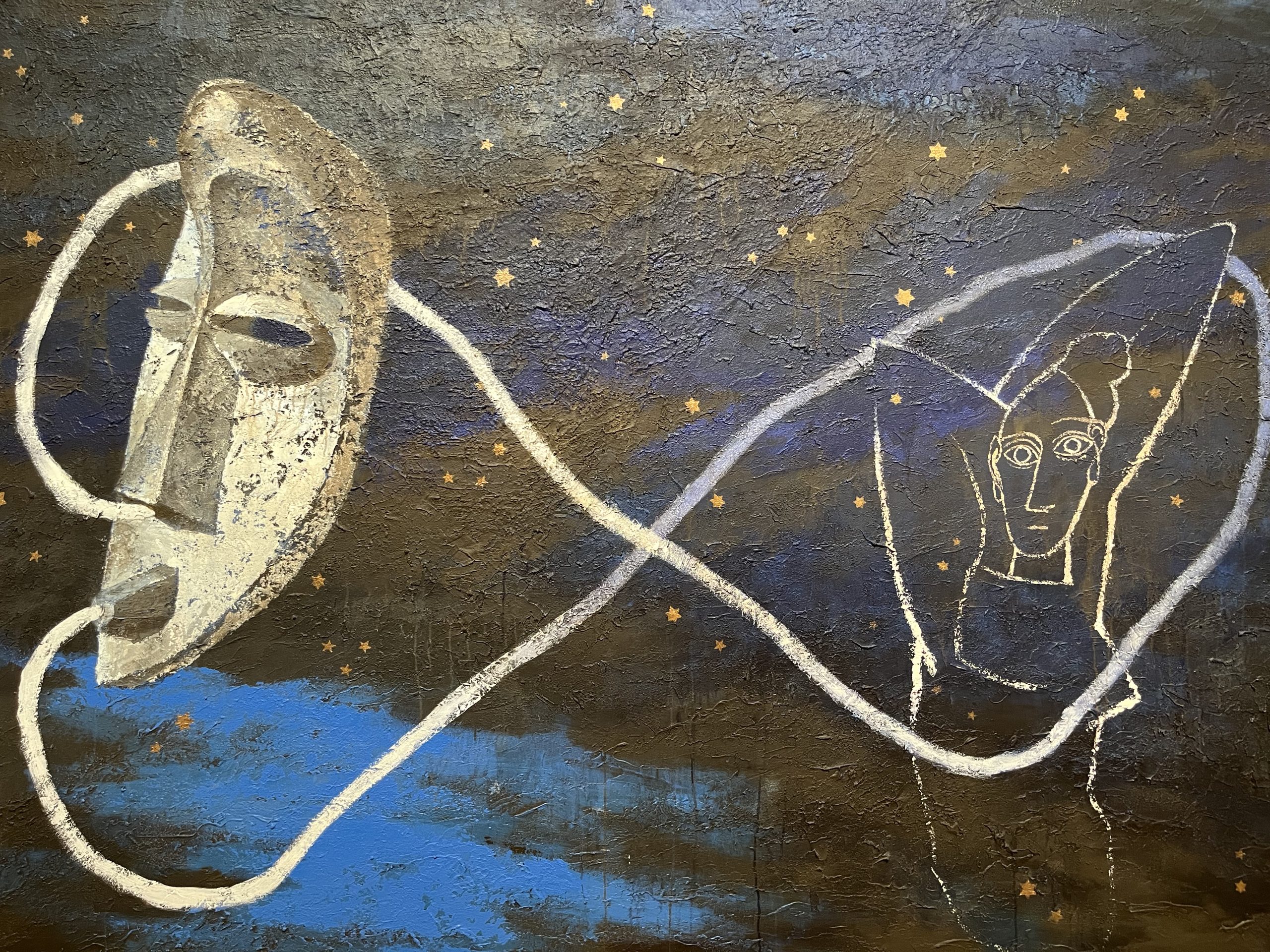During my visit to London this July I saw an exhibition at the Whitechapel Art Gallery by South African artist Gavin Jantjes: To Be Free, A Retrospective.
In his Zulu Series he examines the cosmic realm through the lens of African heritage, drawing on ancient Egyptian, West and South African belief systems relating to the sky and female creativity. Zulu means “the space above your head” in Zulu language. “The heavens are the most neutral space – no nations lay claim to the heavens. They are undefined…and are accessible to every human being,” the artist wrote in 1996.
The untitled painting above, from 1989, is a fascinating depiction of the sharing of breath:
“In the expanse of the night sky, a Fang mask exhales a life-sustaining breath that lassos the female figure with upraised arms from Pablo Picasso’s Les Demoiselles d’Avignon (1907), before returning to its nostrils. This life-giving interconnection of African and European traditions explores one of the historical assumptions of twentieth-century modernism.
African art has often been used by European artists without reference to its original cultural context or significance. In a 1982 speech at the Culture and Resistance Conference in Gaborone, Botswana, Gavin Jantjes championed the centrality of African art in a global understanding of contemporary visual culture. Arts education, he said, could be instrumental in dispelling Western-centric evaluations of contemporary African art and enhancing appreciation of Indigenous heritage and discourses.”
Arts Council Collection, Southbank Centre, London

